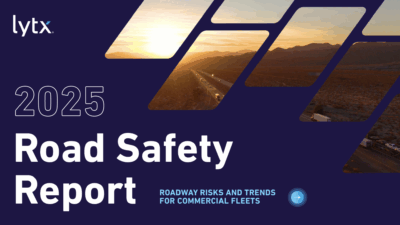Retail Crime Surge: How AI Surveillance is Helping Stop Theft Before It Happens. Retailers in Roodepoort, Gauteng, and across South Africa are facing an escalating crisis: a significant surge in retail crime. From petty shoplifting to sophisticated organized retail crime (ORC) rings, the financial impact is substantial, affecting profit margins and potentially jeopardizing business sustainability. Traditional security measures, while still necessary, often prove reactive, capturing evidence after the crime has occurred. However, a new frontier in crime prevention is emerging: Artificial Intelligence (AI)-powered surveillance systems.
These advanced CCTV systems go far beyond simple recording. By leveraging sophisticated algorithms, they can analyze real-time video feeds to identify suspicious behavior, predict potential theft, and alert security personnel before a crime takes place. This proactive approach offers a powerful new weapon in the fight against retail crime.
Understanding the Retail Crime Landscape in Roodepoort
Roodepoort, like many urban centers in Gauteng, is not immune to the rise in retail crime. Local businesses report increasing incidents of shoplifting, often targeting high-value items. Furthermore, there’s a growing concern about organized groups conducting coordinated thefts, impacting multiple stores and resulting in significant losses. Factors contributing to this surge are complex and can include economic pressures, social issues, and the increasing sophistication of criminal networks.
Traditional security measures, such as manned security personnel and standard CCTV cameras, play a crucial role in deterrence and post-incident investigation. However, their limitations in proactively preventing crime are becoming increasingly apparent. Human security guards cannot be everywhere at once and may miss subtle indicators of suspicious activity. Traditional CCTV footage requires manual review, which is time-consuming and often only useful after a crime has been committed.
The Power of AI in Proactive Crime Prevention
AI-powered surveillance offers a paradigm shift from reactive security to proactive intervention. These systems utilize advanced computer vision and machine learning algorithms to analyze video data in real-time, identifying patterns and anomalies that may indicate potential criminal activity. Here’s how it works:
- Behavioral Analytics: AI can learn and recognize normal behavior within a retail environment. Deviations from these norms, such as individuals loitering in specific areas for extended periods, exhibiting nervous body language, or repeatedly handling high-value items without apparent intent to purchase, can trigger alerts.
- Object Detection and Tracking: AI can be trained to identify specific objects, such as shopping bags being filled with unpaid merchandise or the presence of tools commonly used in theft. It can also track the movement of individuals within the store, identifying potentially suspicious paths or interactions.
- Facial Recognition (with ethical considerations): While the use of facial recognition technology raises privacy concerns, some systems, with proper legal frameworks and consent where necessary, can identify known shoplifters or individuals previously involved in retail crime, providing an early warning upon their entry into the store. It is crucial to emphasize the ethical and legal considerations surrounding this technology and the need for strict adherence to privacy regulations.
- Anomaly Detection: AI algorithms can identify unusual patterns that might not be apparent to human observers, such as a sudden increase in activity in a typically quiet area or unusual interactions between customers.
Real-World Case Studies: AI Stopping Theft Before It Happens
While widespread adoption is still relatively recent, there are compelling real-world examples of how AI-powered CCTV is successfully preventing organized retail crime:
Case Study 1: The Electronics Retailer
A large electronics retailer in a high-crime area of Gauteng was experiencing significant losses due to organized groups targeting high-value items like smartphones and laptops. They implemented an AI-powered surveillance system that was trained to identify groups entering the store together, lingering near specific product categories, and using large bags or tools to disable security tags.
- The Prevention: The AI system detected a group of three individuals exhibiting several of these suspicious behaviors. It alerted security personnel in real-time, providing their locations within the store. Security approached the individuals, politely offering assistance. The group, likely realizing they had been detected, quickly left the store without attempting any theft. Review of the AI-analyzed footage confirmed their suspicious behavior patterns that had triggered the alert.
Case Study 2: The Supermarket Chain
A national supermarket chain with several branches in Roodepoort was struggling with organized groups conducting “grab-and-run” thefts of expensive liquor and baby formula. They deployed AI-powered cameras equipped with behavioral analytics capable of recognizing rapid movement towards exit points with large quantities of unpaid goods.
- The Prevention: The AI system detected a group of four individuals rapidly filling shopping baskets with targeted items and moving quickly towards the exit without passing through checkout. An immediate alert was sent to the store’s security team. Security intercepted the group before they could leave the premises. Confronted with the evidence captured by the AI system, the individuals surrendered the stolen goods, leading to arrests and preventing a significant loss.
Case Study 3: The Clothing Boutique
A high-end clothing boutique in a shopping mall had been targeted by individuals engaging in sophisticated shoplifting techniques, such as concealing items in specially modified bags. They installed AI-powered cameras with object detection capabilities trained to identify unusually large or modified bags entering the store and being used in suspicious ways.
- The Prevention: The AI system identified an individual carrying an oversized bag who was observed discreetly placing several high-value clothing items into it in a secluded corner of the store. The system alerted staff, who approached the individual and inquired about their purchases. The individual became agitated and attempted to leave, but was apprehended by security. The hidden stolen merchandise was recovered, thanks to the AI’s early detection of the suspicious bag and the individual’s behavior.
The Future of AI Surveillance in Retail Crime Prevention
These case studies highlight the significant potential of AI-powered surveillance to proactively combat retail crime. As the technology continues to evolve, we can expect even more sophisticated applications, such as:
- Predictive Analytics: AI could potentially analyze historical crime data, seasonal trends, and even external factors to predict when and where certain types of retail crime are more likely to occur, allowing retailers to deploy resources proactively.
- Integration with Other Security Systems: AI surveillance can be integrated with other security measures, such as access control systems and alarm systems, to create a more comprehensive and responsive security ecosystem.
- Enhanced Forensic Capabilities: Even when a crime does occur, AI-analyzed footage can provide more detailed and searchable evidence, aiding in investigations and potentially leading to the identification of repeat offenders.
Challenges and Considerations
While the benefits of AI surveillance are clear, retailers must also consider the challenges and ethical implications:
- Data Privacy: The collection and analysis of video data, particularly involving facial recognition, raise significant privacy concerns. Retailers must ensure compliance with data protection regulations and implement robust safeguards to protect customer privacy. Transparency about the use of AI surveillance is crucial.
- Accuracy and Bias: AI algorithms are trained on data, and biases in that data can lead to inaccurate or discriminatory outcomes. It is essential to use well-trained and rigorously tested AI models to minimize false positives and ensure fair and equitable application.
- Cost of Implementation: Implementing AI-powered surveillance systems can involve significant upfront investment in hardware, software, and integration. Retailers need to carefully assess the return on investment and the long-term benefits.
- Need for Human Oversight: AI systems are powerful tools, but they are not a replacement for human judgment. Security personnel need to be properly trained to interpret AI alerts and respond appropriately. Human oversight is essential to prevent errors and ensure ethical operation.
Conclusion
The surge in retail crime poses a significant threat to businesses in Roodepoort and beyond. AI-powered surveillance offers a promising solution by enabling proactive crime prevention. The real-world case studies demonstrate its effectiveness in identifying suspicious behavior and intervening before theft occurs. While challenges related to privacy, accuracy, and cost need careful consideration, the potential of AI to create safer retail environments and protect businesses from financial losses is undeniable. As the technology matures and becomes more accessible, AI surveillance is likely to become an increasingly integral part of the retail security landscape in South Africa

















